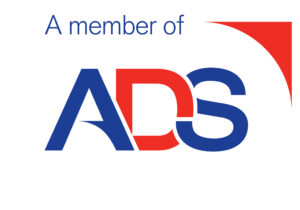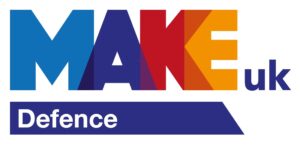Barry ET Harris MBE is a consultant for Proelium Law LLP, he is a veteran of 23 years’ service in the British Army, he combines specialist operational experience with wisdom gained from extensive commercial consulting, executive, and management expertise in his specialities gained in complex environments and high-risk jurisdictions worldwide.
DEFINING SALES
Sales can be thought of the process of helping a client succeed. Helping clients to succeed is not a euphemism for sales – it is the essence of sales. Make the sale! Meet the targets! Perversely the harder we try the worse we do. When the ethos of helping a client succeed is lost sight of, and instead the focus is on personal success, clients will perceive the difference negatively. Successful companies are those that concentrate on the success of others. Helping clients is not about being nice; it is not philanthropic or selfless. It is a powerful, if paradoxical, means of getting what we want.
QUALIFYING OPPORTUNITIES
Poor or a lack of qualification of an opportunity can be a severe penalty. A large number of sales people, unproductively, pursue worthless deals. A significant proportion of sales opportunities are lost because of an inadequate or non-existent qualification process, and a lack of effective sales-planning process. However, frequently the response to failure is to increase the number of opportunities pursued rather than the quality of the qualification process. When low probability sales opportunities are pursued the win rate goes down, and the expenses go up.
Typically, a sales opportunity starts life as unqualified:
- An unqualified lead needs to be subject to a campaign to nurture it into the sales process
- The client is often unsure of what solutions are available
- The client does not know what they want the solution to be yet
- The product or service solution is perceived by the client as being outside of the client’s budget
- It is possible to grow the opportunity to a qualified state, but the cost to the seller of doing so might be too high.
The opportunity is qualified when the prospect client has been researched and is considered ready for the next stage in the sales process.
THE OPPORTUNITY CHECKLIST
The dialogue around a sales opportunity is important. Most situations require that an “Opportunity Conversation” occurs with any individuals who will influence the decision and control resources to make the purchase. Every person will have a perspective on a solution being pursued to meet the client’s needs. Following an Opportunity Checklist is an aid to a mutual understanding of the opportunity:
- Issues – What problems or results are the client trying to address? In what priority?
- Evidence – How is the problem defined? How is success measured?
- Impact – What are the financial and intangible costs and benefits?
- Context – Who or what else is affected by the issues and the solution?
- Constraints – What has stopped, or could stop, the resolution of the issues?
The Opportunity Checklist points to what is required to be known to qualify the opportunity; structuring the conversation is a question and answer process to elicit information efficiently.
THE OPPORTUNITY CONVERSATION
To structure the conversation:
- Solutioning:
The solution discussion intends to understand better the issues that the solution must address. If significant issues or desired results are not articulated, then there is probably low client motivation.
- Establish all the issues:
After the solution conversation, establish the issues. There are usually multiple issues rather than just one. The salesperson must be patient and show discipline to get all the issues first, as long as the client is willing. They can then be discussed in order of importance to the client. Do not immediately discuss the first issue mentioned, instead obtain the complete list, or the following is risked:
- Missing issues may be missing opportunities
- Too much time could be allocated on what is not the most important issue
- Even with the most important issue discovered, time, energy, and scarce resources will have been wasted.
The issues list can be tested for completeness by asking the question – If all the issues are successfully addressed, what would be the solution that exactly meets the requirement? When a client ponders this, they often come up with additional items that can be very important.
- Prioritise the issues:
With a complete issues list, they can be prioritised. While all the issues will be important and interrelated, ask the client to identify one that has the most leverage or impact. Eighty percent of impact is twenty percent of the issues. When prioritised spend the most time on the issues most important to the client.
- Gather evidence and impact:
Do not overlook the evidence. Even if the client’s issue is understood, and a potential solution is available, it is essential to define the problem closely. Evidence gathering and impact is pivotal to building a good business case for the opportunity. A good business case reinforces the probability of successful sale. If there is no business case, or it is inadequate, this should serve as a warning to the salesperson. Evidence defines problems and measures success.
Questions to establish evidence can be guided by how the client phrases an issue. Some issues can immediately be measured as they are subject to hard numbers, so are “Hard Issues”, such as cost, and existing client-owned solutions. “Soft Issues” are more difficult to place a cash value on, but they no less important or less impactful.
- Explore context and constraints:
There are two types of client related context: organisational and operational:
- Organisational:
How does the solution fit into the big picture? How does it connect with:
- the client’s mission?
- the client’s values?
- key strategies and initiatives of the client?
- the external and internal pressures facing the client?
- the political landscape in the client’s organisation?
What is going on in the client’s organisation affects all decisions being made, including the decision to procure the solution. A solution that aligns with the organisational context of the client is more attractive to people and are less price sensitive.
- Operational:
A proposed solution can intervene in a system and will have ramifications in other parts of the client’s organisation. Solutions rarely exist in isolation. The more the salesperson thinks systemically, the more likely it is that the proposed solution will work for the whole of the client organisation and be sustainable over time.
What constraints have stopped the client from resolving the issue? If this is a new opportunity, the constraints question can be, what, if anything, might prevent the successful implementation of the solution going forward? The answer to the question will provide valuable insight, but it is often never asked by the salesperson. The answer is either good constraints or bad constraints:
- Good constraints are things that the client cannot do that the proposed solution can do for them.
- Bad constraints are things that have prevented success in the past, which if uncorrected, will continue to prevent success.
Customers purchase to solve problems. A good salesperson must first seek to understand the true nature and extent of the problem the client needs addressing, and then offer a solution. Often the solution can be very different from the one the customer envisaged. A good salesperson will even talk the customer out of making a wrong purchase because ultimately the customer will respect the salesperson’s honesty, and may become a repeat customer.
If the opportunity is not qualified, nothing else matters. Asking useful questions adds value and insight to the client as well as providing the necessary information for the sales process.
If you have enjoyed this article, and would like to find out more about the sales process, or other management and business development processes, please see the other articles in this series here, or contact Barry Harris at [email protected].
Need advice?
If you’d like further information, or to discuss working with us, please get in touch






